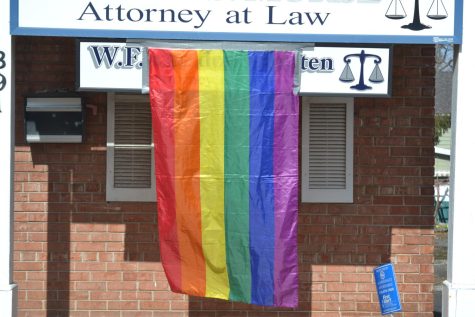Op-Ed: SAT Adversity Score
In mid-May, a new measure of fairness in standardized testing was the topic of much discussion across the country. The College Board, administers of the SAT, faced praise and scrutiny for the decision to implement what is widely being called the “adversity score.” The SAT has been, since its conception in 1926, thought of as a great equalizer because technically, anyone can do well on it. This is, of course, an exceptionally simplistic way of thinking because there are an incredible number of factors that influence preparedness as well as familiarity with standardized tests and thus, a student’s final result. What the adversity score aims to do is give colleges more insight into the challenges faced by applicants based on 15 factors such as environmental and socioeconomic conditions. Each student is given a score from 1-100 which is then included on the test results sent to colleges. A score of 50 is average, meaning that particular person faced no greater or lesser hardship than any of the other 2 million high school students across the country taking the test. Anything above 50 indicates greater adversity, while less than 50 means that hardship was limited. The final number is not added points, nor is the student told the end amount, but the score will be sent with SAT results to the colleges the student applies to.
The announcement was met with mixed feelings, some applauding the College Board on their attempt to even the playing field while others felt that it was too little too late. One of the main problems found in many institutions of higher education is lack of diversity, with many schools accepting a disproportionate number of students from affluent backgrounds. The creation of the adversity score is intended to increase the amount of students accepted from low income neighborhoods, though in terms of racial diversity, there will be no race factor taken into account when calculating the score. For this reason, many people feel that the College Board is yet again mishandling the issue of racial inequality when it comes to standardized testing. Besides completely overlooking the issue of racial disparity, many critics of the adversity score question if hardship can be explained in a number. Stability at home isn’t taken into account, nor is individual family income, though the average income for the student’s neighborhood is. There are just too many factors that affect the way people develop for an algorithm to tell a complete story.
What does this mean for students at Curtis? It is hard to tell quite yet what affect this will have on future groups of college bound students. Much of the data used to calculate the score will come from the census and since we don’t know how that data is manipulated to arrive at the end result, we cannot give a reasonable estimate. More likely than not, the score will benefit our students because the school is located in a low income neighborhood. It is up to each school to make an assessment about the adversity score but here are some questions to keep in mind while doing so. Can inequality in standardized testing be fixed by an extra number? On the heels of the college admissions scandal, can the score be manipulated to benefit those it should not? Can a number determine hardship faced by students?



